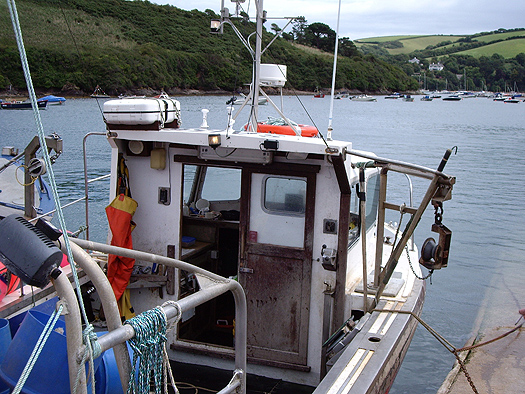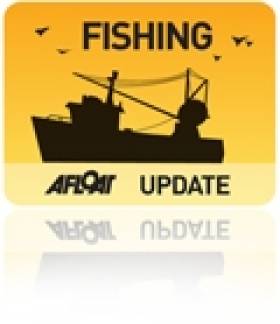Displaying items by tag: tracking device
Low Cost Device Could 'Revolutionise' Commerical Fishing, Say Backers
A new, hi-tech global tracking device that could revolutionise the way the commercial fishing industry operates is to be officially launched following a series of successful trials across the South West of England.
Succorfish has worked closely with Seafish to design its newest and most advanced vessel monitoring system; the SC2. It has been developed specifically for the fishing industry and will allow vessels to accurately map and monitor their position using dual GPRS/GSM software to within one metre, provides closer access to marine protected areas such as Lyme Bay whilst avoiding hefty fines previously incurred when breached, and improve and increase overall inshore fishing activity.

Succorfish's new hi-tech global vessel monitoring system, the SC2, can be seen to the right of the light on the wheel-house
The low cost device complies with current UK fishing laws and uses real time satellite and mobile phone technology, as well as online tracking software, to monitor and record the course and position of vessels via up-to-the-minute reporting. Information is then relayed back to a password protected website where users can view their personal data through a graphical user interface.
And, with new EU legislation being introduced in 2012 that will force all 12m-15m vessels to have monitoring systems with satellite reporting, the SC2 is now being regarded as the cost
effective solution to a worldwide fishing industry problem. Additionally, for vessels 15m and over, the product is also e-log ready and directly interfaces with a specialist, state-of-the-art catch reporting software system via a global satellite network.
Nick Prust, SWIFA Chairman and owner of one of the vessels that took part in the trials commented, “This is the solution that the industry has been looking for and the system will be
a real asset to fisherman regardless of their fishing methods. It will give us continued access to fishing grounds with spatial and temporal restrictions whilst allowing us to co-exist alongside
newly proposed MPA’s.”
George Henricks, Commercial Director of Succorfish added, “We have worked very closely with industry representatives and listened long and hard to all of the stakeholders who have
participated in the inshore VMS trial. All of those parties have a common goal in that they want to see the long-term security of both the marine environment and the livelihoods of the
fishermen. Therefore, by designing and developing a product like the SC2, we can directly support the industry and make huge strides towards achieving its goal.”
The SC2 has been developed in conjunction with Seafish and CEFAS following a 12 months pilot project to monitor the UK’s inshore fishing activity. It has been funded by Defra as part of
its remit to undertake economic and social research in the marine environment and overseen by representatives from the Marine Management Organisation (MMO), Natural England, Devon Sea Fisheries Committee, the South West Inshore Fishermen’s Association and the UK Marine Protected Areas Coalition Group.





























































